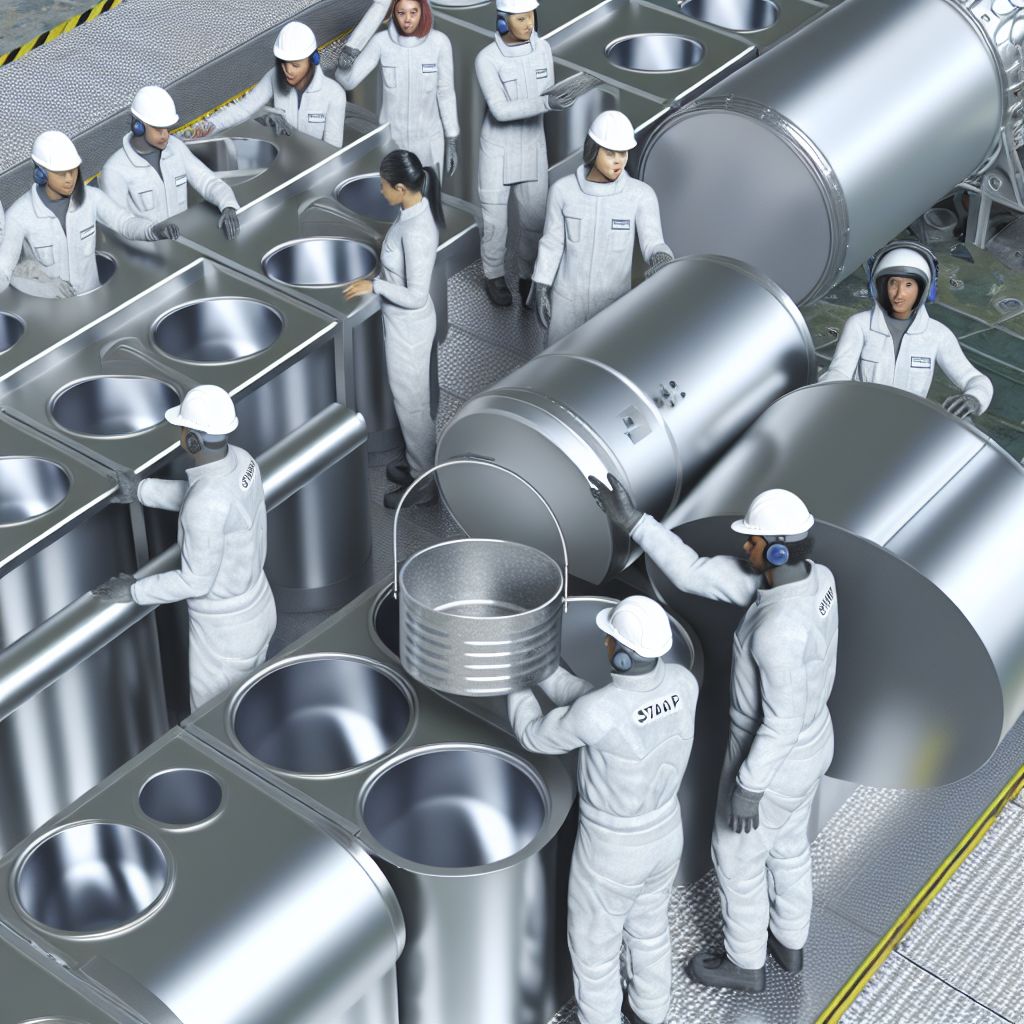Deutsch: Aluminium / Español: Aluminio / Português: Alumínio / Français: Aluminium / Italiano: Alluminio
Aluminium in the Space industry context refers to a lightweight, strong, and corrosion-resistant metal widely used in the construction of Spacecraft, satellites, and Launch Vehicles. Its favorable strength-to-Weight ratio, excellent thermal and electrical Conductivity, and ability to withstand the Harsh conditions of space make it an essential material in aerospace Engineering. Aluminium alloys, which combine aluminium with other elements to enhance its properties, are particularly prevalent in the space industry, providing the structural components necessary for space exploration and satellite operations.
Description

Aluminium and its alloys are used in various applications within the space industry due to their combination of lightweight, strength, and resistance to environmental Degradation. These materials are employed in the fabrication of structural frameworks, fuel tanks, Engine components, and thermal protection systems, among others. Aluminium's natural oxide layer provides inherent protection against corrosion, further enhancing its suitability for space applications where maintenance and repairs are not feasible.
Application Areas
- Structural Components: Aluminium alloys are used in the primary structures of rockets, spacecraft, and satellite bodies due to their strength and low Density.
- Thermal Management: Aluminium's thermal properties make it ideal for Heat shields and radiator panels that protect spacecraft from extreme temperatures.
- Fuel Tanks: The lightweight nature of aluminium is advantageous for Manufacturing fuel tanks, helping to reduce the overall Launch weight of space vehicles.
Well-Known Examples
- External Tank of the Space Shuttle: The external tank, which held the Liquid Hydrogen and liquid oxygen needed for launch, was made primarily of aluminium and aluminium-lithium alloys.
- Satellite Frames: Many satellites use aluminium alloys in their structural frames and components because of their low density and high stiffness.
- International Space Station (ISS): Aluminium is extensively used in the structure of the ISS, including its modules and supporting framework.
Treatment and Risks
While aluminium offers many benefits in space applications, working with it involves several considerations:
- Material Fatigue and Stress: Ensuring that aluminium components can withstand the cycles of stress experienced during launch and in the space Environment.
- Galvanic Corrosion: When aluminium is in contact with dissimilar metals, it can be prone to galvanic corrosion unless properly insulated or treated.
- Thermal Expansion: Managing the thermal expansion of aluminium in the variable temperatures of space to prevent structural damage.
Similar Terms or Synonyms
- Aerospace-grade aluminium
- Aluminium alloys in space engineering
- Lightweight metal for spacecraft
Weblinks
- architektur-lexikon.de: 'Aluminium' in the architektur-lexikon.de (German)
- top500.de: 'Aluminium' in the glossary of the top500.de
- industrie-lexikon.de: 'Aluminium' in the industrie-lexikon.de (German)
- allerwelt-lexikon.de: 'Aluminium' in the allerwelt-lexikon.de (German)
- umweltdatenbank.de: 'Aluminium' im Lexikon der umweltdatenbank.de (German)
Summary
In the space industry, aluminium stands out as a key material due to its advantageous blend of lightweight, strength, and resistance to the space environment. From the framework of the largest spacecraft to the smallest satellite components, aluminium and its alloys contribute critically to the success and Sustainability of space missions, underlining the material's pivotal role in advancing space Exploration and Technology.
--
Related Articles to the term 'Aluminium' | |
| 'Riveting' | ■■■■■■■■■■ |
| Riveting in the space industry refers to the mechanical process of joining materials, typically sheets . . . Read More | |
| 'Aluminium' at environment-database.eu | ■■■■■■■■■ |
| Aluminium in the environmental context refers to the role of this lightweight metal concerning its extraction, . . . Read More | |
| 'Aluminum' | ■■■■■■■■■ |
| Aluminum is a commonly used material in the construction of aircraft. It is lightweight, strong, and . . . Read More | |
| 'Titanium' | ■■■■■■■■■ |
| Titanium is a metal that is used in the construction of aircraft and other aerospace systems. Titanium . . . Read More | |
| 'Plastic' | ■■■■■■■■■ |
| Plastic refers to a wide range of synthetic or semi-synthetic materials that are made from polymers, . . . Read More | |
| 'Metallurgy' | ■■■■■■■■■ |
| Metallurgy refers to the science and technology of metals, focusing on their extraction, processing, . . . Read More | |
| 'Iridium' | ■■■■■■■■■ |
| In the aerospace industry, iridium is a chemical element that is used in a variety of applications. Iridium . . . Read More | |
| 'Aluminum' at environment-database.eu | ■■■■■■■■ |
| Aluminum in the environmental context refers to a lightweight, silvery-white metal known for its versatile . . . Read More | |
| 'Structure' | ■■■■■■■■ |
| Structure: In the aerospace industry, structure refers to the framework or underlying support that is . . . Read More | |
| 'Polycarbonate' | ■■■■■■■■ |
| Polycarbonate refers to a type of durable, transparent thermoplastic polymer known for its high impact . . . Read More | |
